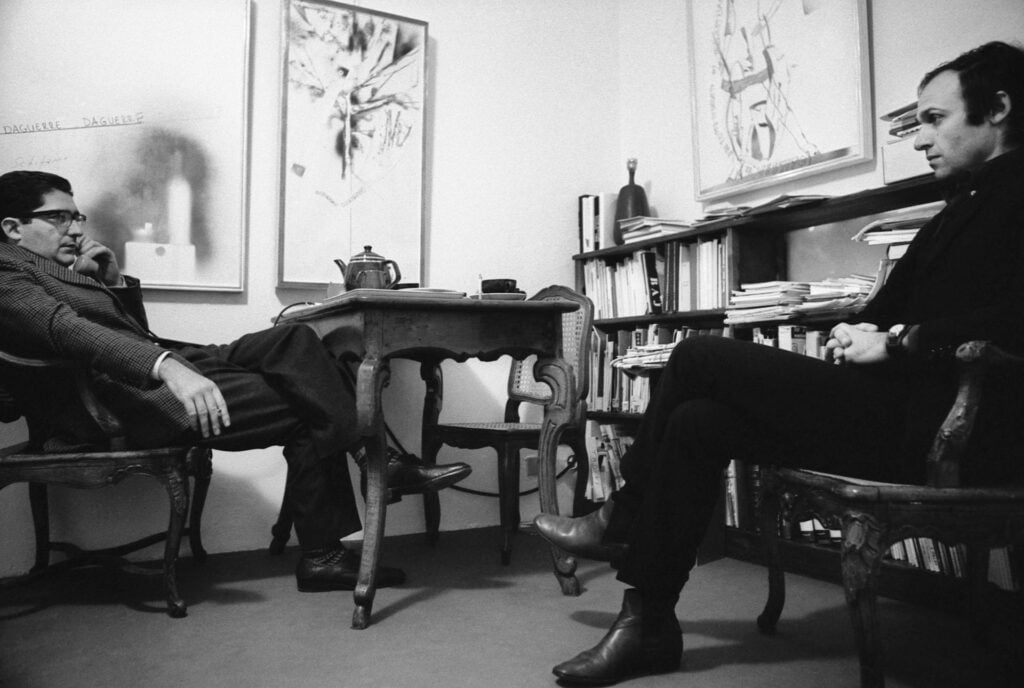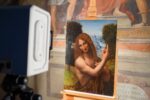Mario Schifano – TUTTO on paper…

Mostra personale.
Comunicato stampa
Fondazione Marconi and Gió Marconi are pleased to announce Mario Schifano TUTTO nelle carte... [TUTTO on Paper...], a major retrospective curated by Alberto Salvadori that aims to shed light on Mario Schifano’s extensive and varied production of works on paper from the 1960s.
Realised with the support of Archivio Mario Schifano, the project runs parallel to the exhibition Mario Schifano: The Rise of the ‘60s, curated by Alberto Salvadori and organised by Magazzino Italian Art to mark the opening of the new Robert Olnick Pavilion in Cold Spring, New York.
The exhibition will feature a selection of works on paper that retraces the best-known cycles that the artist was concurrently also creating on canvas, beginning from the Monocromi and ending with Compagni compagni.
Mario Schifano’s work and journey were intense and never separate. His works on paper represent an important and copious production. The selection on display clearly demonstrates that throughout the decade of the sixties, for Mario Schifano art was TUTTO: art that evolves and revolves around the subject, reality, and a new mindful consciousness in relation to the city, human space, life and emotions.
In the same manner as his paintings, the works on paper provide vivid evidence of how everything influenced his way of seeing and thinking: films, signage, advertising, politics, loves and friendships. Nothing escaped his need to capture on a support the moment, the lightning idea or the concept.
More so than other artists, he immediately and independently understood how art is life and vice versa. He differentiated himself initially from the American phenomena of pop art and new dada, and then from everyone else for the rest of his career. His artworks on paper are the geographical map of his way of thinking and his practice.
The works on paper occupy an important place in Schifano’s oeuvre and are essential to a comparative interpretation of his entire production, both in terms of their relationship of similarity with the paintings and their expressive language.
From the early years of the monochromes –– which contain and re-elaborate street art, the language of pop culture, not as pop art, but rather as the popular language of sign painters –– up until the emulsion canvases, paper was always present as the constant for any idea that intersected the moment.
In Schifano’s world, images no longer function in the habitual way we interpret them, and so we are forced to reconsider them. The traditional relationships of composition vanish, leaving room for thousands of possibilities, which the artist selected and used as an inevitable step in his process. Whatever is taken for granted in pictorial or photographic terms evaporates in Schifano’s work: he confronts us with a new way of dealing with reality and invention, which in his work becomes manipulation through painting, regardless of the support.
Schifano’s work during the 1960s compels us to analyse functions, uses, social roles and cultural and political contexts. It demands the question: what are the new areas of creation? His work is a philosophical exercise linked to the experience of life; a call for the analysis of real and widespread behavioural modes as an antithesis to elitist or specialised ones. In his work -– which is ultimately his biography –- Schifano seems to be a practitioner with centralising, authoritarian connotations, only to suddenly reveal to us the contrary: an open, voluntary and participatory system of art.
Ontology is counterposed with use, authorship with access and participation, appropriation with adoption, and creativity with the attribution of meaning. Everything is available to be selected and shared. From an archive in the making, composed of the available mass of drawn and painted papers and the pretext of completeness, one moves to the next phase of pictorial collation: an exercise involving identification, searching, selecting and recycling.
Schifano is empirical and experimental; he is hungry for the world that presents itself before him; he transforms everything into pure painting. It does not have to be on canvas, it also lives on paper.



